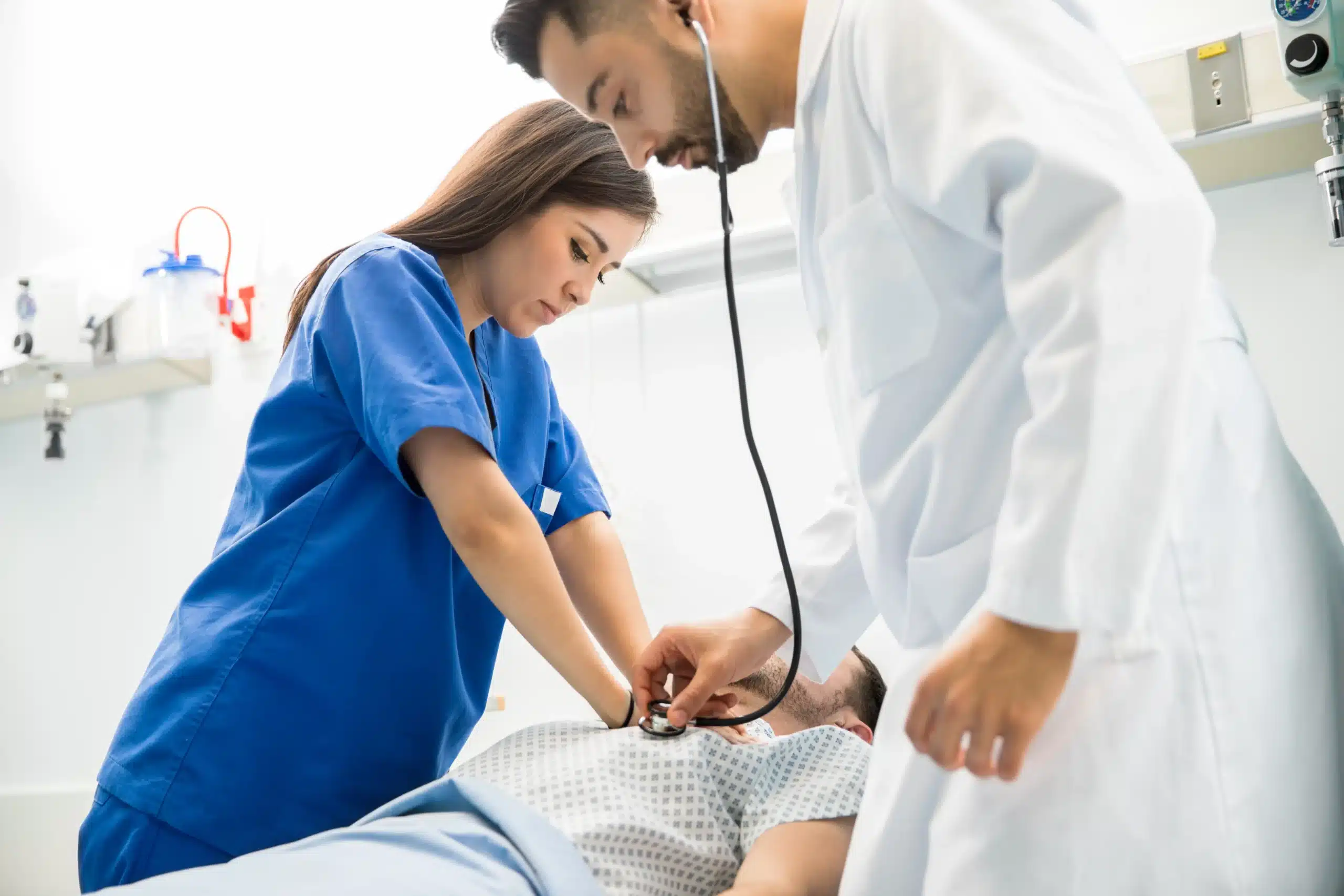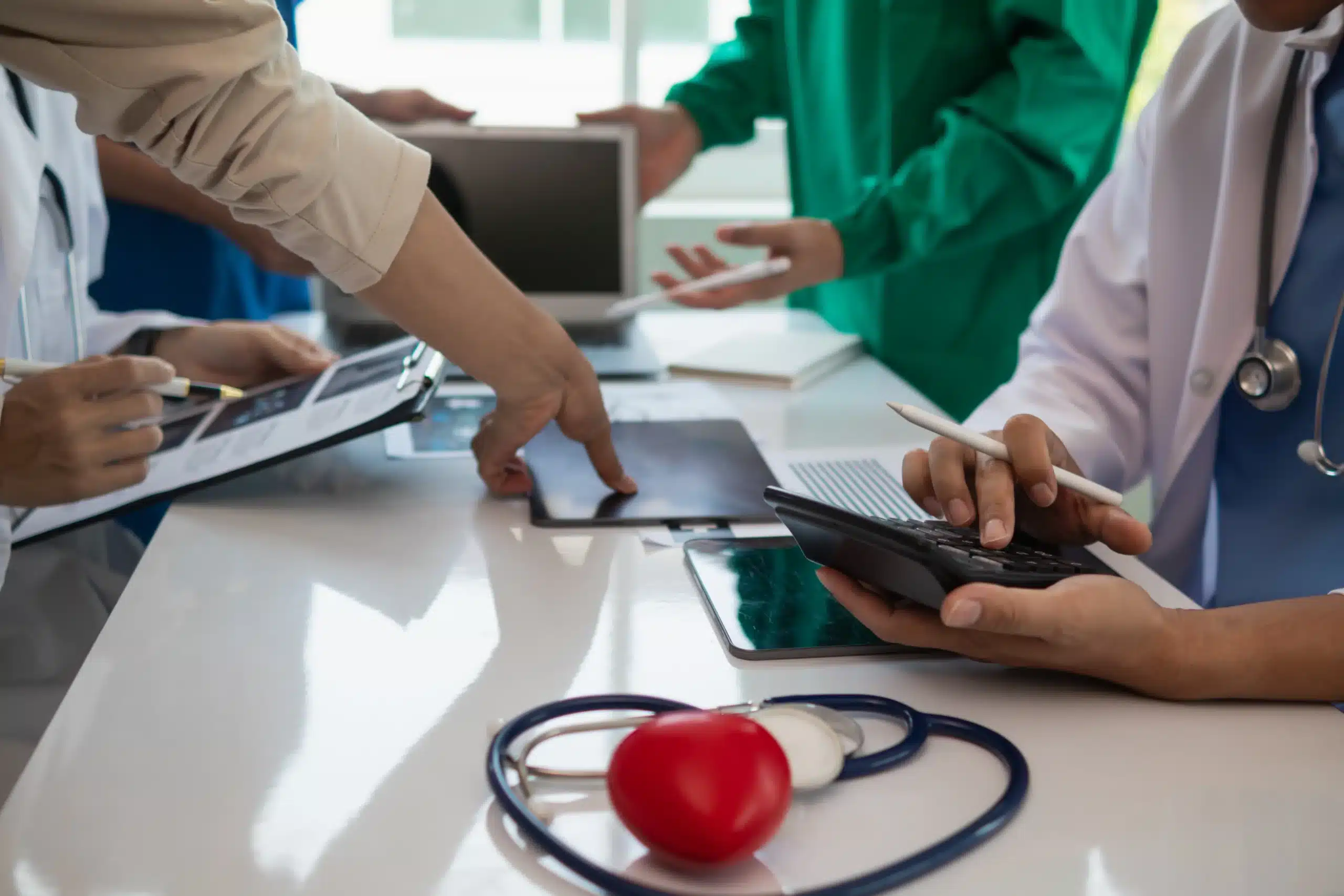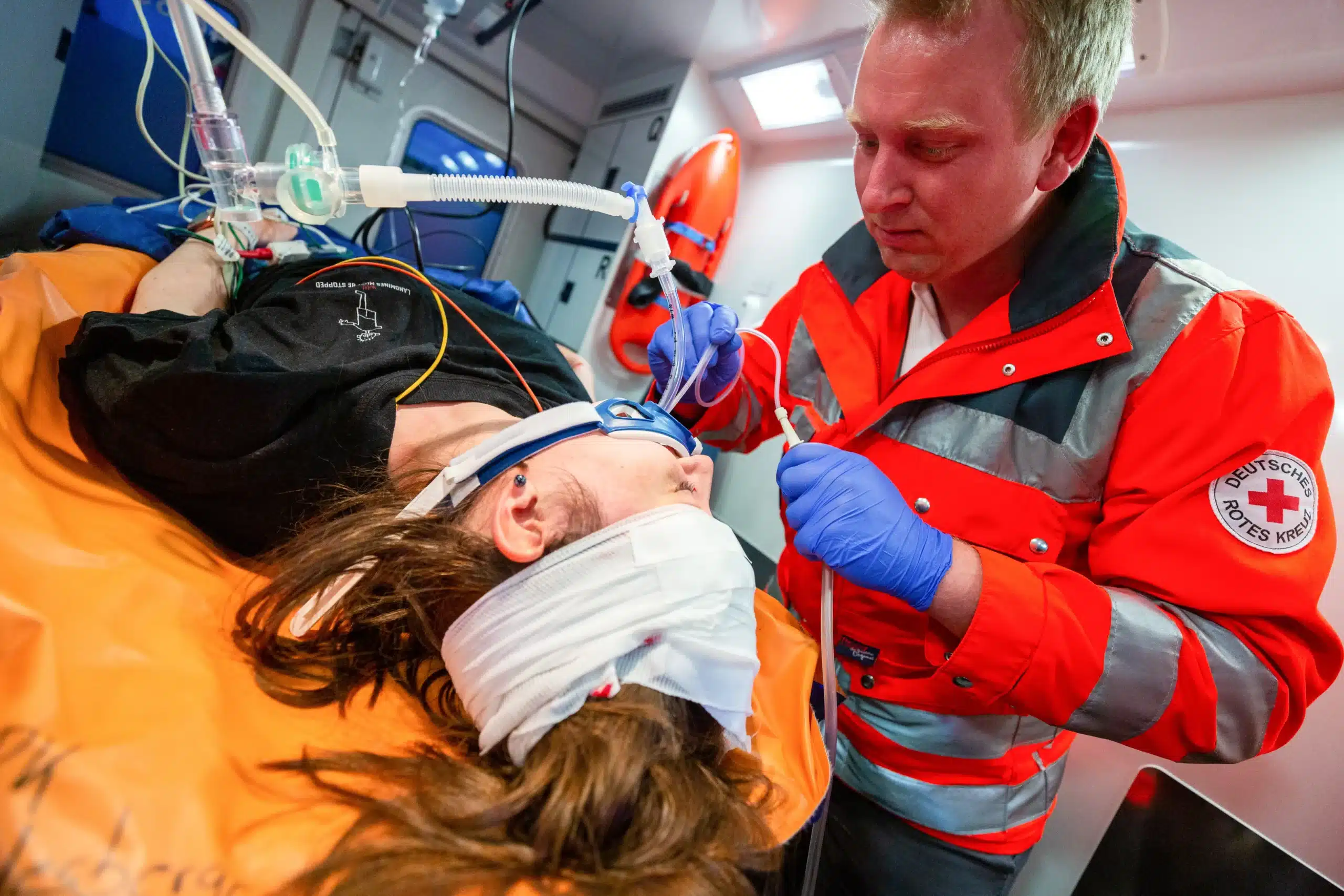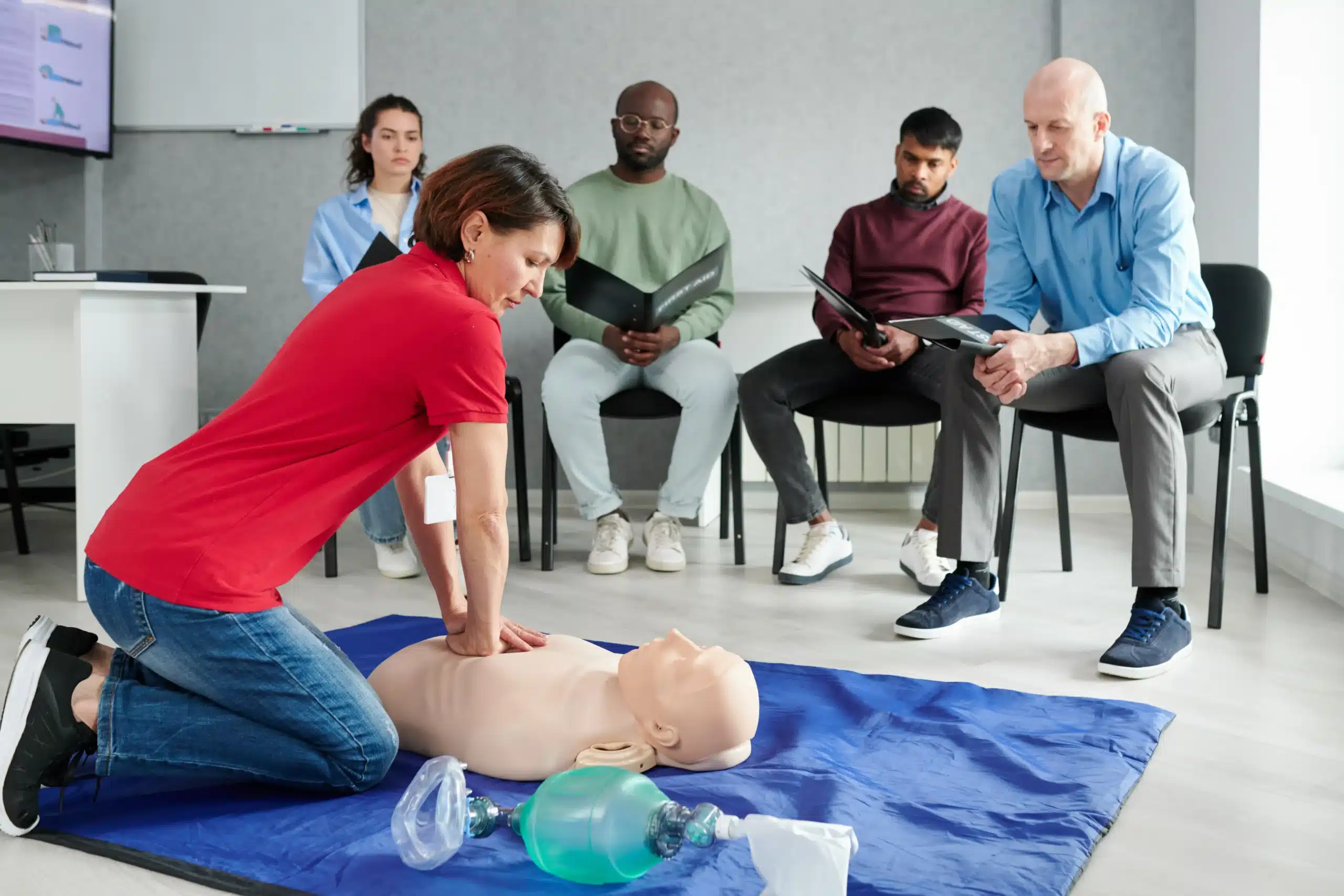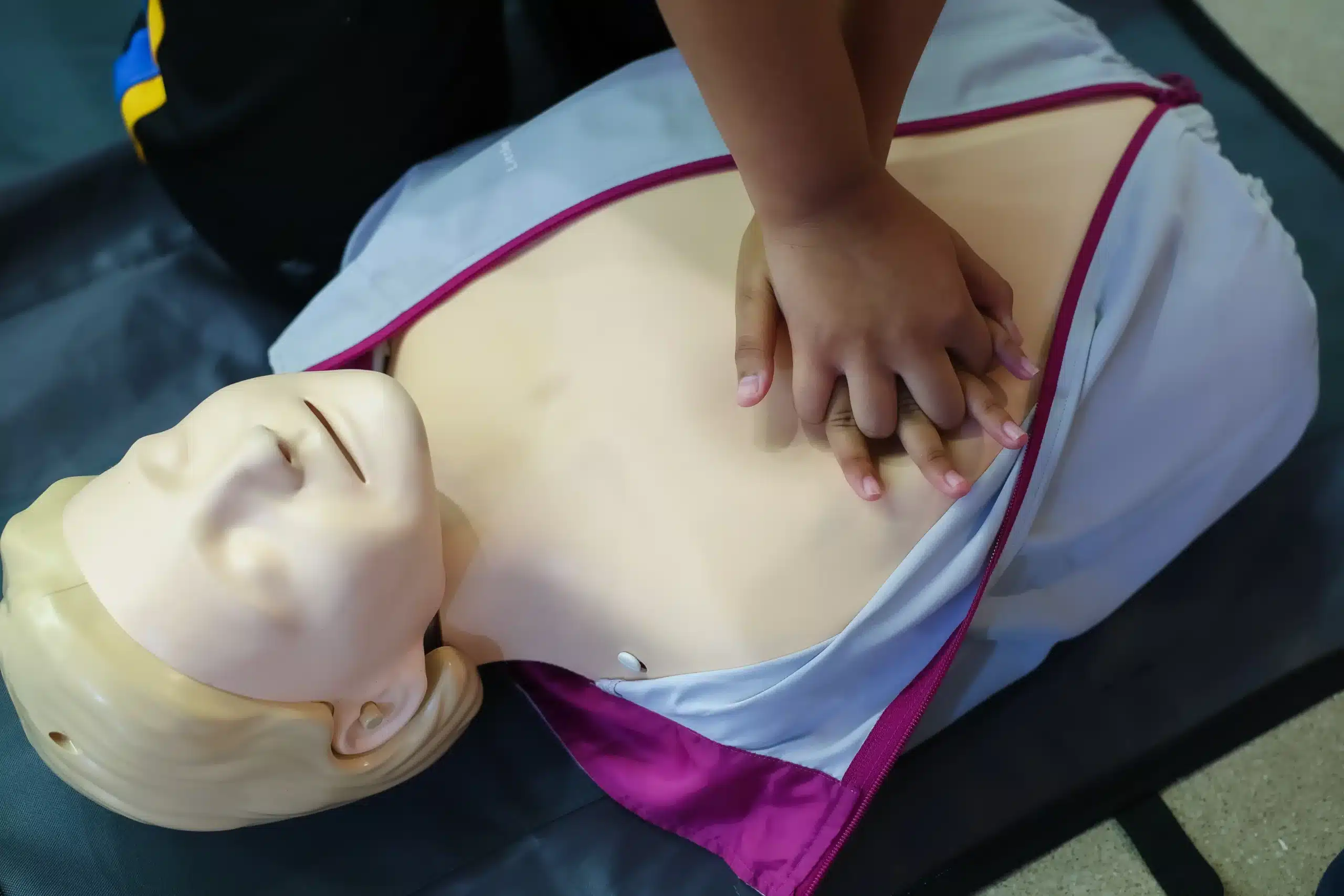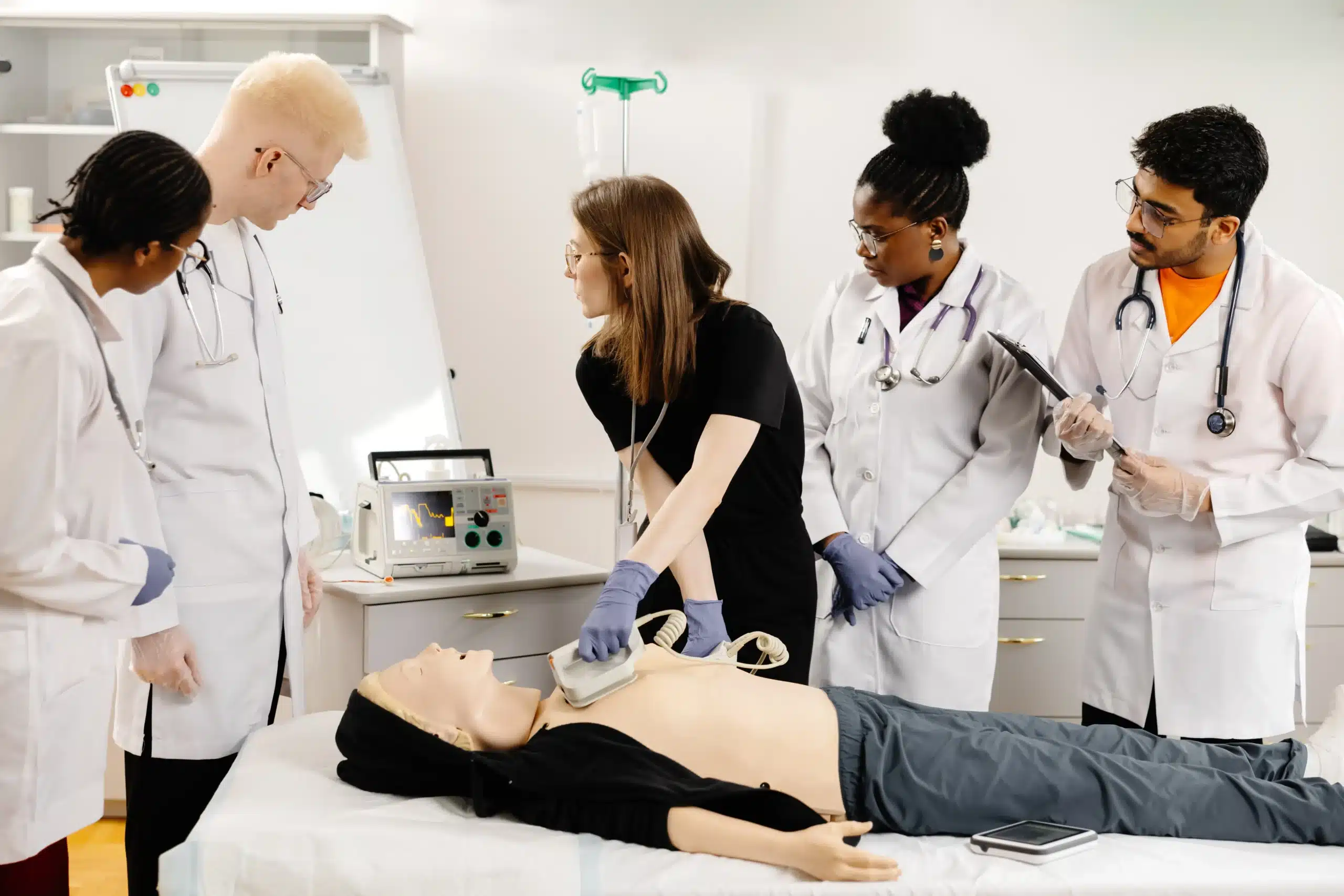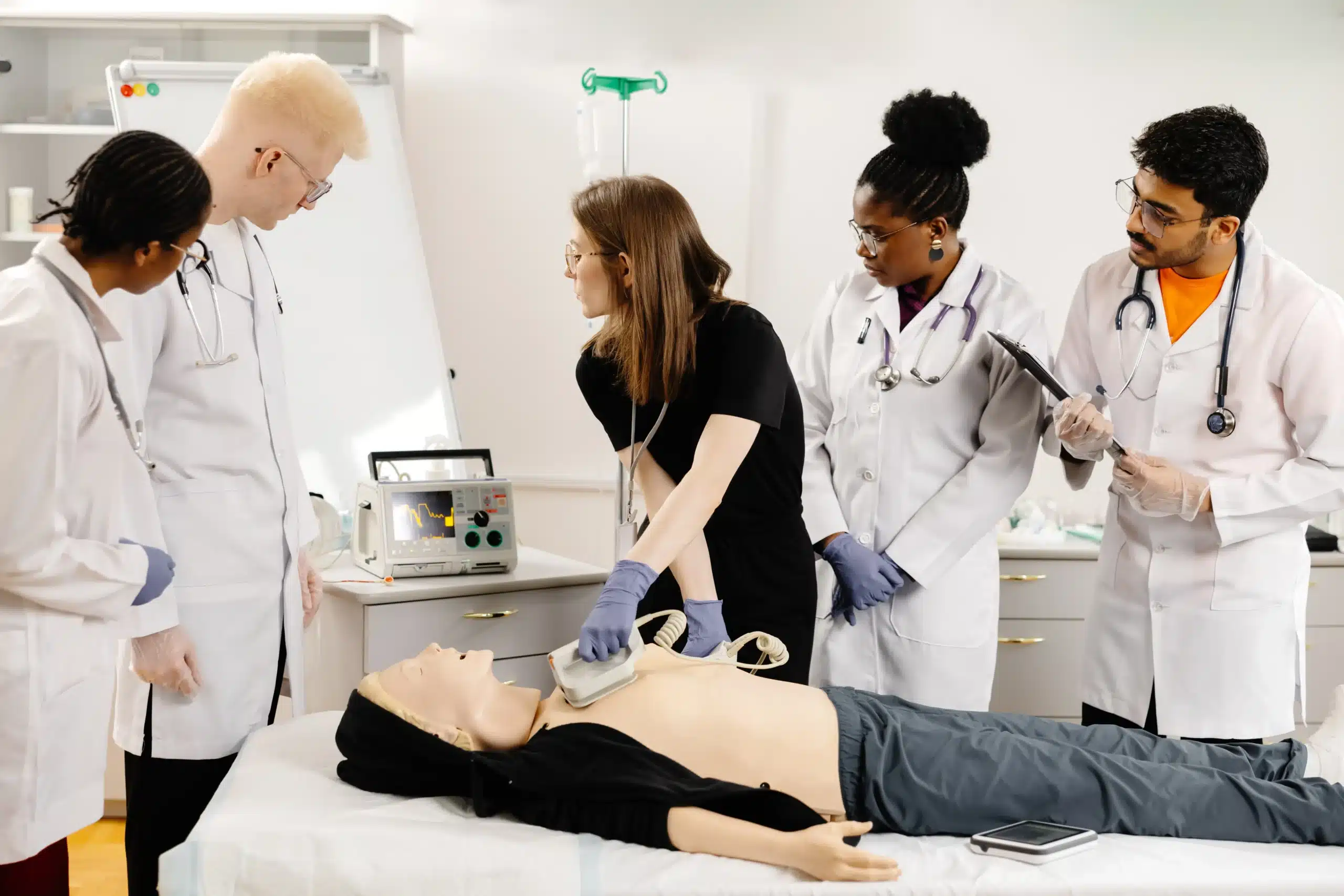Life is unpredictable, and emergencies can arise at any moment. Being prepared to respond effectively in such situations can be the difference between life and death. BLS, or Basic Life Support, certification equips you with the skills and confidence to provide immediate care during medical crises. This guide will walk you through everything you need to know about BLS certification, from the essential skills it covers to finding a “BLS certification near me.” We’ll explore the various training formats available, discuss the costs and value of certification, and address some common misconceptions about BLS. Whether you’re a healthcare professional or simply someone who wants to be prepared for anything, this guide is your starting point for becoming BLS certified.
Key Takeaways
- BLS certification provides essential life-saving skills: From CPR and AED use to airway management, these skills empower you to respond effectively to emergencies, regardless of your profession. Explore different course formats to find the best fit.
- Select a reputable BLS training provider: Accreditation, qualified instructors, comprehensive materials, and scheduling flexibility are key factors to consider. Student reviews can offer valuable perspectives.
- Understand your role and responsibilities: Familiarize yourself with Good Samaritan laws and the ethical considerations surrounding BLS. This knowledge builds confidence and ensures appropriate action in emergencies.
What is BLS Certification?
BLS certification is a training program that teaches the fundamentals of basic life support. It goes beyond basic first aid, equipping you with the skills to respond to life-threatening emergencies. BLS focuses on providing high-quality chest compressions, delivering appropriate ventilation, and ensuring early use of an automated external defibrillator (AED). This training provides the knowledge and confidence to act quickly and effectively in critical situations. It’s a vital skill set for healthcare professionals and anyone who wants to be prepared to help in a medical emergency. For more information on our CPR and first aid courses, visit our CPR and first-aid certification courses page.
Key BLS Skills
BLS certification equips you with essential life-saving skills. You’ll learn how to perform high-quality CPR, including chest compressions and rescue breaths, for adults, children, and infants. The training also covers how to use an AED, a portable device that can help restore a normal heart rhythm during sudden cardiac arrest. Airway management techniques are another crucial component of BLS, ensuring adequate oxygen flow. These skills combined give you the ability to respond confidently and effectively in various emergency situations. You can find more details about our BLS training on our BLS training in Vacaville page.
Who Needs BLS Certification?
BLS certification is valuable for a wide range of individuals. While it’s often a requirement for healthcare providers, such as doctors, nurses, and paramedics, it’s also highly recommended for anyone working in a healthcare setting. Other professionals who benefit from BLS certification include teachers, coaches, lifeguards, and childcare providers. Essentially, anyone who might need to respond to a medical emergency can benefit from having these skills. Even if you’re not required to have BLS certification for your job, it’s a worthwhile investment that can empower you to save a life. Learn more about our group discounts for your team or organization.
Find BLS Certification Near You
Finding the right BLS certification course often starts with a local search. Where you live plays a big role in which course providers are available and accessible to you. Here’s a breakdown of common places to find BLS certification classes:
Top Local Providers
Vacaville CPR Classes
If you’re in Vacaville, Dixon, or Fairfield, California, Vacaville CPR Classes offers comprehensive American Heart Association (AHA) BLS, ACLS, PALS, CPR, and First Aid training. They focus on providing excellent customer service and offer daily certification courses, making scheduling convenient. Check out their website for more information on their group discounts and low price guarantee. They also offer RQI classes.
American Heart Association
The AHA itself often lists certified training centers on its website. This is a great way to find reputable providers who meet the AHA’s standards. You can search by location to find classes near you.
American Red Cross
The American Red Cross also offers BLS certification courses. They often provide a range of learning options, including in-person, online, and blended learning formats. Check their website for courses in your area.
Local Hospitals and Medical Centers
Many hospitals and medical centers offer BLS certification courses, often geared towards their staff but sometimes open to the community as well. Contact your local hospitals to inquire about their course offerings.
Community Colleges
Community colleges frequently offer BLS certification courses, often at a lower cost than private training providers. These courses can be a good option for those seeking a more affordable certification route. Check with your local community college to see what’s available.
BLS Training Formats
Choosing the right BLS training format depends on your learning style, schedule, and budget. Let’s explore the most common options: in-person, online, and blended learning. Each has its own advantages, so consider what works best for you.
In-Person Classes
In-person BLS certification courses offer a structured learning environment with direct interaction with an instructor. This format provides immediate feedback and the opportunity to practice skills in a controlled setting. You’ll work with training equipment and learn alongside other students, which can enhance the learning experience through observation and collaboration. If you thrive in a traditional classroom setting and value face-to-face instruction, in-person training might be the perfect fit. For those in and around Vacaville, Dixon, and Fairfield, connect with us to learn more about our in-person class schedule. We offer group discounts and a low price guarantee.
Online Courses
Online BLS training provides flexibility and convenience, allowing you to learn at your own pace. These courses typically use interactive modules and videos to cover essential BLS concepts and techniques. This format is ideal for those with busy schedules or limited access to in-person training locations. While online courses offer theoretical knowledge, they often require a separate in-person skills session for hands-on practice and official certification. Review our website for more information on available online and in-person courses.
Blended Learning
Blended learning combines the benefits of online and in-person training. You’ll complete the theoretical coursework online at your convenience, then attend an in-person skills session to demonstrate your proficiency. This approach offers a flexible learning experience while ensuring you receive the necessary hands-on training and instructor feedback. Blended learning is a great option for those who want the convenience of online learning combined with the practical application of in-person skills practice. Contact us to explore our blended learning options and see if this format is right for you.
Get BLS Certified
Now that you understand the importance of BLS certification, let’s explore the certification process. This section covers the course content, duration, assessment, and renewal requirements.
Course Content and Duration
BLS certification courses equip healthcare providers and other professionals with the skills to respond to life-threatening emergencies. These courses cover essential techniques like CPR, AED usage, and airway management. You’ll learn to recognize cardiac arrest, stroke, and choking, and provide appropriate care until professional help arrives. BLS training also emphasizes teamwork, communication, and following established protocols during emergencies. BLS CPR classes typically last four to six hours, depending on the course format and provider.
Skills Assessment and Certification
Throughout the BLS course, instructors assess your skills through practical demonstrations and simulations. You’ll practice in a safe environment, receiving feedback from experienced instructors. After successfully completing the course and skills assessment, you’ll receive an AHA certification, the gold standard in CPR and emergency cardiovascular care training. This certification validates your competence in providing lifesaving skills. BLS CPR classes offered by the AHA significantly impact community preparedness for emergencies.
Renewal Requirements
To maintain your BLS certification and stay current with the latest guidelines, you’ll need to renew your certification every two years. Renewal courses cover guideline updates and reinforce essential skills. Keeping your certification current ensures you’re prepared to respond effectively in an emergency. While BLS certification is crucial for healthcare professionals, some misconceptions exist. Make sure you understand the requirements and the value of maintaining your certification.
BLS Certification: Cost & Value
Getting BLS certified is an investment in your skills and your future. Let’s break down the costs, potential discounts, and the undeniable value a BLS certification brings.
Average Pricing
The cost of BLS certification varies. Generally, you can expect to pay anywhere from $30 to $150, depending on the training provider, your location, and the type of certification. For example, online courses sometimes have different pricing than in-person training. It’s always a good idea to check with a few different providers, like Vacaville CPR Classes, to compare pricing and find the best fit for your budget. Recertification costs down the line can also vary depending on the provider and their recognition.
Discounts and Promotions
Many training centers offer discounts, so keep an eye out! Some providers offer discounts for group registrations, students, or even early bird sign-ups. Choosing an online BLS certification course can also be a smart way to save on travel expenses and time off work. Before committing to a course, check if the provider offers any special promotions. Vacaville CPR Classes is a great place to start your search.
Return on Investment
While there’s a monetary cost associated with BLS certification, think of it as an investment with a significant return. This certification equips you with life-saving skills, including CPR, using an AED, and airway management. These skills empower you to confidently respond to emergencies. Whether you’re a healthcare professional, a childcare provider, or simply someone who wants to be prepared, a BLS certification provides invaluable skills and peace of mind. It’s not just a piece of paper—it’s a testament to your ability to act in critical situations. Learn more about the importance of BLS training in this guide.
Choose the Right BLS Provider
Finding the right BLS provider is crucial for a valuable learning experience. Here’s what to consider:
Accreditation and Recognition
First, confirm the organization’s accreditation and recognition. A reputable provider, like the American Heart Association, adheres to the latest guidelines and standards, ensuring your certification is widely accepted. This is key for career advancement and demonstrates a commitment to high-quality training. Don’t hesitate to ask about affiliations and recognitions. For example, if a provider is affiliated with a well-known organization like the AHA, it adds to their credibility.
Instructor Qualifications
Experienced, certified instructors bring a wealth of knowledge and practical skills to the classroom. Look for providers boasting a team of qualified medical professionals and subject matter experts. ACLS Medical Training, for example, emphasizes the credentials of their instructors, which can significantly impact the quality of instruction. Instructors should be able to answer your questions thoroughly and provide real-world examples. Their expertise can make a real difference in your understanding and confidence.
Course Materials and Resources
Comprehensive course materials are essential for effective learning. Ensure the provider offers up-to-date resources aligned with current industry standards. Vacaville CPR Classes uses American Heart Association materials, known for their comprehensiveness and relevance. Ask about the resources included in the course, such as manuals, videos, and online practice tools. Having access to high-quality materials can significantly enhance your learning experience.
Scheduling Flexibility
A good BLS provider understands that people have busy schedules. Look for options that suit your needs, whether you prefer in-person classes or online learning. Fairfield CPR Classes offers various formats to accommodate different schedules and learning preferences. Consider factors like class times, locations, and the pace of the course. Finding a course that fits your schedule can make all the difference in completing your certification. CPR Class Today is another example of a provider offering flexible scheduling options.
Student Reviews
Reading reviews from past students offers valuable insights into the learning experience. Criticare Medical highlights the importance of student feedback in choosing the right class. Reviews can offer perspectives on the quality of instruction, course materials, and overall experience. Look for patterns in feedback to get a well-rounded understanding of the provider. Student reviews can provide an authentic look at what to expect from a particular course or instructor. Yelp is a great resource for finding reviews of local businesses, including BLS providers.
Prepare for Your BLS Course
Getting ready for your BLS certification course doesn’t require extensive preparation, but a little groundwork ensures you’re set up for success. Understanding the basics and gathering your study materials ahead of time can make a big difference.
Prerequisites and Study Materials
There are no strict prerequisites for taking a BLS course. Whether you’re a medical student, a healthcare provider, or someone wanting to learn essential lifesaving skills, BLS certification is accessible to everyone. It’s more than just a requirement for many healthcare professions—it’s a vital skill that empowers you to respond effectively during emergencies. While some providers offer online BLS certification courses, making scheduling easier for busy professionals, in-person courses at providers like Vacaville CPR Classes offer hands-on learning and direct interaction with instructors. Check with your chosen provider to see what materials, such as student handbooks covering essential techniques, they recommend.
What to Expect on Certification Day
Knowing what to expect can ease any pre-course jitters. BLS courses typically involve interactive lectures, demonstrations, and hands-on practice. You’ll learn essential techniques like CPR, how to use an AED, and how to relieve choking. The duration of these classes can vary, often ranging from four to six hours, depending on the provider and format. Many courses also offer continuing education credits, a bonus for healthcare professionals maintaining their licenses or certifications. Be prepared for an engaging and informative day focused on building your lifesaving skills. Bring a pen and notepad for notes, and dress comfortably for easy movement during practice. Most importantly, come ready to learn and ask questions!
BLS Certification: Common Misconceptions
There are a few common misconceptions surrounding BLS certification, especially its relation to CPR and the validity of online training. Let’s clear those up.
BLS vs. CPR
One common area of confusion is the difference between BLS (Basic Life Support) and CPR (Cardiopulmonary Resuscitation). While both are life-saving techniques, they have different focuses. CPR training gives you the basic skills to respond to cardiac arrest and breathing emergencies. It concentrates on chest compressions, rescue breaths, and recognizing a cardiac event. BLS certification builds on those foundational CPR skills and includes more advanced techniques like using AEDs and managing airways. It’s designed for healthcare providers like doctors, nurses, and paramedics. Think of CPR as the essential first step, while BLS provides a broader skillset for healthcare professionals. The American Red Cross offers a helpful resource explaining the differences between these certifications. At Vacaville CPR Classes, we offer various American Heart Association CPR and First-Aid Certification courses to meet your specific needs.
Online vs. In-Person Training
Another misconception is about online BLS certification. Some believe online courses aren’t as good as in-person training. That’s not true. Online BLS certification courses offer comprehensive training, covering the same essential topics as traditional classes, including AED usage, airway management, and choking interventions. They’re a flexible option for busy professionals. In-person training, however, offers hands-on practice and direct interaction with instructors. Both formats have their own benefits, so the best choice depends on your learning style and availability. For in-person training in Vacaville, Dixon, or Fairfield, California, contact us at Vacaville CPR Classes to learn more about our group discounts. We also offer RQI classes and have a low price guarantee.
Use Your BLS Certification
Getting your BLS certification is an investment, whether you work in healthcare or another field. It gives you practical skills you can use in various professional settings and shows you’re committed to safety and preparedness. Let’s explore how you can use your BLS certification to improve your career and contribute to a safer community.
BLS Skills in Various Professions
BLS certification gives you essential life-saving skills applicable in diverse professions. From CPR and AED use to airway management, these techniques empower you to respond effectively during emergencies. While healthcare professionals like doctors and nurses use these skills daily, many other fields benefit from having BLS-trained individuals. Childcare providers, lifeguards, coaches, teachers, and even those in corporate settings—anyone can encounter a situation requiring immediate medical assistance. Having BLS training allows you to provide crucial support and instills confidence and leadership in times of crisis. A BLS certification is a valuable asset, enhancing your professional profile and potentially leading to new opportunities. Learn more about BLS training.
Continuing Education
Maintaining your BLS certification is crucial for staying up-to-date with the latest guidelines and techniques. BLS certification typically requires renewal every two years, ensuring your skills remain sharp and aligned with current best practices. Renewal often involves a refresher course, covering any updates in protocols and procedures. These courses also offer continuing education credits, further enhancing your professional development. By staying current with your BLS certification, you demonstrate a commitment to ongoing learning and providing high-quality care in emergencies. This commitment benefits your career and reinforces your ability to confidently and effectively respond to medical emergencies. For a deeper understanding of BLS and its importance, explore this comprehensive FAQ.
BLS Certification: Legal Considerations
Understanding the legal aspects surrounding BLS certification, especially the protections and responsibilities it entails, is crucial for anyone considering or renewing their training. This knowledge empowers you to act confidently in emergencies.
Good Samaritan Laws
Good Samaritan laws exist to protect individuals who voluntarily provide aid in emergencies. These laws offer a legal safety net, shielding those who step up to help from the fear of legal repercussions, provided their actions are reasonable and within the scope of their training. Essentially, if you administer BLS or CPR during an emergency and something goes wrong, you’re generally protected from liability unless your actions demonstrate gross negligence. This protection is vital because it encourages people to act in emergencies without hesitation, knowing they won’t face unnecessary legal action. For more information on Good Samaritan Laws, check out resources like CPR Select.
Rights and Responsibilities
While Good Samaritan laws offer important protections, BLS providers also have specific rights and responsibilities. Trained individuals, especially healthcare professionals, often have additional legal protections under these laws because their training signifies a higher level of expertise. However, ethical considerations can arise, particularly concerning a patient’s right to refuse treatment and the presence of Do Not Resuscitate (DNR) orders. It’s essential for rescuers to initiate CPR unless a valid DNR order is presented. Accurately documenting the situation afterward ensures legal protection and helps maintain consistent patient care. Resources like First Aid Web can provide further information on the ethical and legal considerations for healthcare providers. Understanding these legal and ethical considerations is a key part of your BLS training.
Related Articles
- BLS Certification in Dixon: Your Complete Guide – Vacaville CPR Classes
- BLS Courses in Vacaville: Your Guide – Vacaville CPR Classes
- BLS Recertification Near Me: A Practical Guide – Vacaville CPR Classes
- Find BLS Training Near Me: A Practical Guide – Vacaville CPR Classes
- BLS Certification in Vacaville for Healthcare Providers – Vacaville CPR Classes
Frequently Asked Questions
What’s the difference between BLS and CPR certification? CPR is the foundation, teaching you chest compressions, rescue breaths, and how to recognize a cardiac event. BLS builds upon CPR, adding skills like using an AED and managing airways. It’s designed for healthcare providers and those in healthcare settings, giving them a broader skillset for emergencies.
How long does it take to get BLS certified? BLS courses typically run between four and six hours, depending on the training provider and whether you choose an in-person, blended, or online format. Check with your chosen provider for their specific course duration.
How much does BLS certification cost? Costs range from $30 to $150, depending on the provider, location, and course format. Look for providers offering discounts for groups, students, or early registration. Don’t hesitate to compare prices from different providers to find the best value.
How often do I need to renew my BLS certification? BLS certification is typically valid for two years. Renewal involves a refresher course to update your skills and knowledge based on the latest guidelines. This ensures you’re always prepared to respond effectively in an emergency.
Is online BLS certification as good as in-person training? Both online and in-person BLS certifications cover the same core material and techniques. Online offers flexibility for busy schedules, while in-person provides hands-on practice and direct interaction with instructors. The best choice depends on your learning style and preferences.
